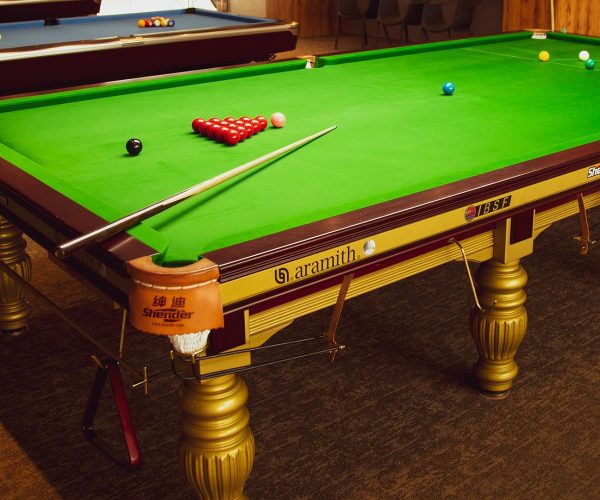Now You can Have Your What Is Billiards Accomplished Safely
페이지 정보
작성자 Eli 작성일24-09-24 18:33 조회7회 댓글0건관련링크
본문
If the spotted ball cannot be placed on the foot spot, it should be placed in contact (if possible) with the corresponding interfering ball. They typically assume that their billiard ball is an infinitely small, dimensionless point and that it bounces off the walls with perfect symmetry, departing at the same angle as it arrives, as seen below. Start with a trajectory that’s at a right angle to the hypotenuse (the long side of the triangle). What happens when you hit the ball on an angle? Since each mirror image of the rectangle corresponds to the ball bouncing off a wall, for the ball to return to its starting point traveling in the same direction, its trajectory must cross the table an even number of times in both directions. Another approach has been used to show that if all the angles are rational - that is, they can be expressed as fractions - obtuse triangles with even bigger angles must have periodic trajectories. So m and n must be even. And yet analyzing billiard trajectories shows how even the most abstract mathematics can connect to the world we live in. Rather than asking about trajectories that return to their starting point, this problem asks whether trajectories can visit every point on a given table.
In 1958, Roger Penrose, a mathematician who went on to win the 2020 Nobel Prize in Physics, found a curved table in which any point in one region couldn’t illuminate any point in another region. No one really knows the genesis of kubb. But no one knows if the same is true for obtuse triangles. That is, a laser beam shot from one point, regardless of its direction, cannot hit the other point. This is called the illumination problem because we can think about it by imagining a laser beam reflecting off mirrored walls enclosing the billiard table. The key idea that Tokarsky used when building his special table was that if a laser beam starts at one of the acute angles in a 45°-45°-90° triangle, it can never return to that corner. Suppose you want to find a periodic orbit that crosses the table n times in the long direction and m times in the short direction.

Somewhat remarkably, the existence of one periodic orbit in a polygon implies the existence of infinitely many; shifting the trajectory by just a little bit will yield a family of related periodic trajectories. Billiard tables shaped like acute and right triangles have periodic trajectories. In the early 1990s, Fred Holt at the University of Washington and Gregory Galperin and his collaborators at Moscow State University independently showed that every right triangle has periodic orbits. In their 1992 paper, Galperin and his collaborators came up with a variety of methods of reflecting obtuse triangles in a way that lets you create periodic orbits, but the methods only worked for some special cases. His approach worked not only for obtuse triangles, but for far more complicated shapes: Irregular 100-sided tables, say, or polygons whose walls zig and zag creating nooks and crannies, have periodic orbits, so long as the angles are rational.
Her work seemed far removed from trick shots in pool halls. This mathematical trick makes it possible to prove things about the trajectory that would otherwise be challenging to see. This process (seen below), called the unfolding of the billiard path, allows the ball to continue in a straight-line trajectory. If there are no obstructions, the player at the table may remove the Ball Rack Template without the opponent interfering. Draw a line segment from a point on the original table to the identical point on a copy n tables away in the long direction and m tables away in the short direction. A cue ball will tend to curve away from the shot line with english, toward the left with left-hand english and vice versa. Both expressions may be combined to explain the point of the cue ball aimed at for a shot. There may be isolated dark spots (as in Tokarsky’s and Wolecki’s examples) but no dark regions as there are in the Penrose example, what is billiards which has curved walls rather than straight ones. In Wolecki’s 2019 article, he strengthened this result by proving that there are only finitely many pairs of unilluminable points.
댓글목록
등록된 댓글이 없습니다.









